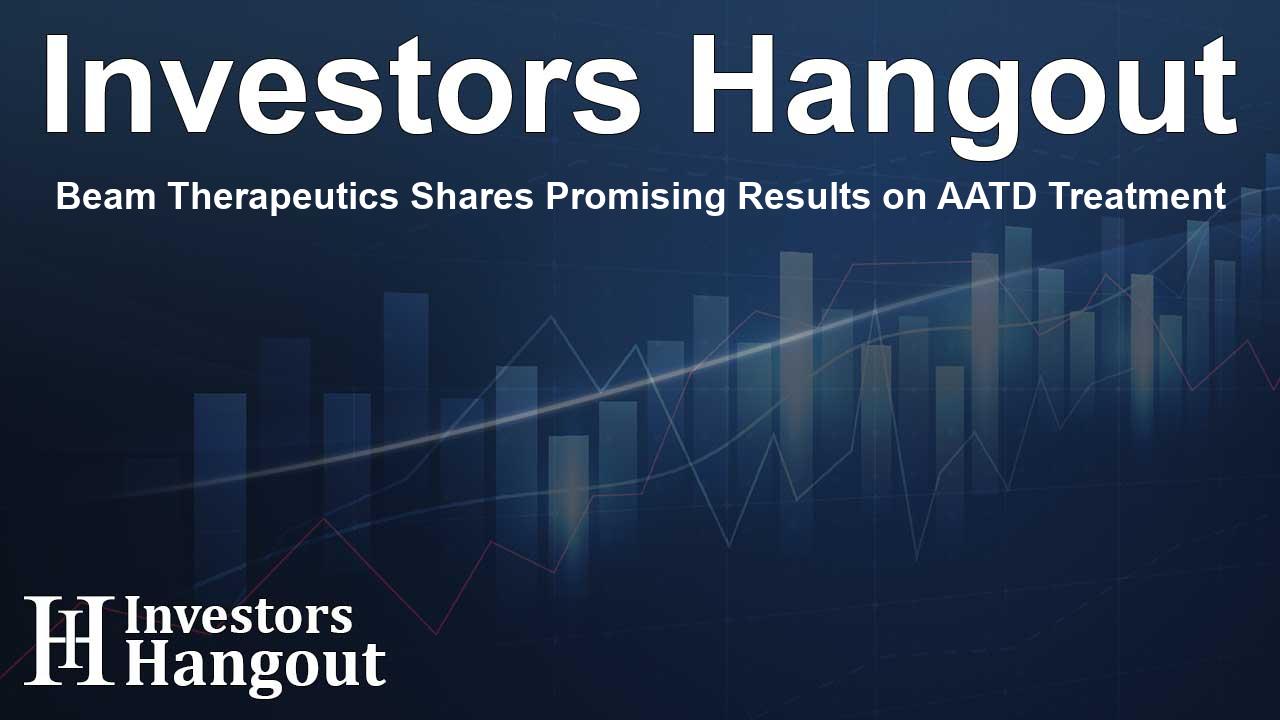Beam Therapeutics Shares Promising Results on AATD Treatment

Exciting Developments in AATD Research by Beam Therapeutics
Beam Therapeutics Inc. (Nasdaq: BEAM) is making significant strides in the fight against Alpha-1 Antitrypsin Deficiency (AATD), a genetic condition that can lead to serious health issues such as emphysema and liver disease. At a recent global conference, the company showcased groundbreaking data from its ongoing Phase 1/2 clinical trial for its innovative treatment, BEAM-302. This progress reaffirms Beam’s commitment to developing effective, precision-based therapies.
Key Findings from the BEAM-302 Trial
In the trial, particularly within a cohort receiving a 60 mg dose, remarkable results were observed. At Day 28 post-treatment, participants showed that an impressive average of 91% of the total AAT in their bloodstream was comprised of corrected M-AAT, significantly surpassing the levels typically seen in patients with the MZ genotype. Alongside this, there was a notable 79% reduction in the mutant variant, known as Z-AAT, demonstrating the treatment's potential effectiveness in correcting the genetic mutation responsible for AATD.
Unveiling Future Prospects
As the company continues its research, BEAM-302 is set to enter its fourth dose cohort, exploring a dosage of 75 mg, with new data anticipated to be presented at an upcoming medical conference in the latter half of the year. This dose-escalation approach underscores Beam's dedication to comprehensively evaluating the safety and efficacy of its treatment.
Impacts on Patient Health
Patients suffering from AATD are at risk for life-altering complications, such as liver damage and chronic lung issues. Given this context, the promise shown by BEAM-302 presents a beacon of hope. Dr. Amy Simon, Chief Medical Officer, reflected on the profound implications of the data presented, emphasizing the necessity for effective therapies to address the multifaceted nature of the disease.
Advancements in Clinical Trials
Beam’s drug application for BEAM-302 has recently received clearance from the U.S. Food and Drug Administration (FDA). With this approval, the company can further its clinical trial phases, bringing them closer to providing new treatment options for patients suffering with AATD, including those with liver disease.
Understanding the Disease: Alpha-1 Antitrypsin Deficiency
AATD is a hereditary condition that occurs due to mutations in the SERPINA1 gene, leading to decreased levels of the protective protein, alpha-1 antitrypsin. Patients with the severe form of AATD, who possess the PiZZ genotype, can experience severe health issues, including progressive liver disease and lung degeneration. While there are attempts at treatments, most existing options do not adequately prevent the disease's progression.
Beam Therapeutics: A Leader in Genetic Medicine
Beam Therapeutics, with its innovative gene editing technology, aims to create precise genetic therapies to treat conditions like AATD effectively. By utilizing base editing, their approach ensures minimal disruption to the DNA, focusing on correcting harmful mutations without causing additional damage. This leading-edge technology could revolutionize the way we address genetic diseases.
In summary, Beam Therapeutics is on an ambitious journey toward unlocking new possibilities in treating Alpha-1 Antitrypsin Deficiency. With promising early results and ongoing trials, the potential for transforming patient care is becoming a reality.
Frequently Asked Questions
What is Alpha-1 Antitrypsin Deficiency?
AATD is a genetic disorder that results in low levels of alpha-1 antitrypsin, leading to serious lung and liver complications.
How does BEAM-302 work?
BEAM-302 aims to correct the genetic mutation causing AATD using advanced base editing technology, allowing for the production of functional AAT.
What were the main findings from the recent BEAM-302 trial?
Trial results showed that treated patients reached an average of 91% corrected M-AAT in circulation, alongside a 79% decrease in harmful Z-AAT.
When can we expect more data from Beam Therapeutics?
Further results are anticipated in the second half of the year, following the initiation of additional cohorts in the clinical trial.
Is there currently a cure for AATD?
There are no curative treatments available for AATD, but ongoing research, including Beam’s BEAM-302 program, may provide new therapeutic options.
About The Author
Contact Addison Perry privately here. Or send an email with ATTN: Addison Perry as the subject to contact@investorshangout.com.
About Investors Hangout
Investors Hangout is a leading online stock forum for financial discussion and learning, offering a wide range of free tools and resources. It draws in traders of all levels, who exchange market knowledge, investigate trading tactics, and keep an eye on industry developments in real time. Featuring financial articles, stock message boards, quotes, charts, company profiles, and live news updates. Through cooperative learning and a wealth of informational resources, it helps users from novices creating their first portfolios to experts honing their techniques. Join Investors Hangout today: https://investorshangout.com/
The content of this article is based on factual, publicly available information and does not represent legal, financial, or investment advice. Investors Hangout does not offer financial advice, and the author is not a licensed financial advisor. Consult a qualified advisor before making any financial or investment decisions based on this article. This article should not be considered advice to purchase, sell, or hold any securities or other investments. If any of the material provided here is inaccurate, please contact us for corrections.
